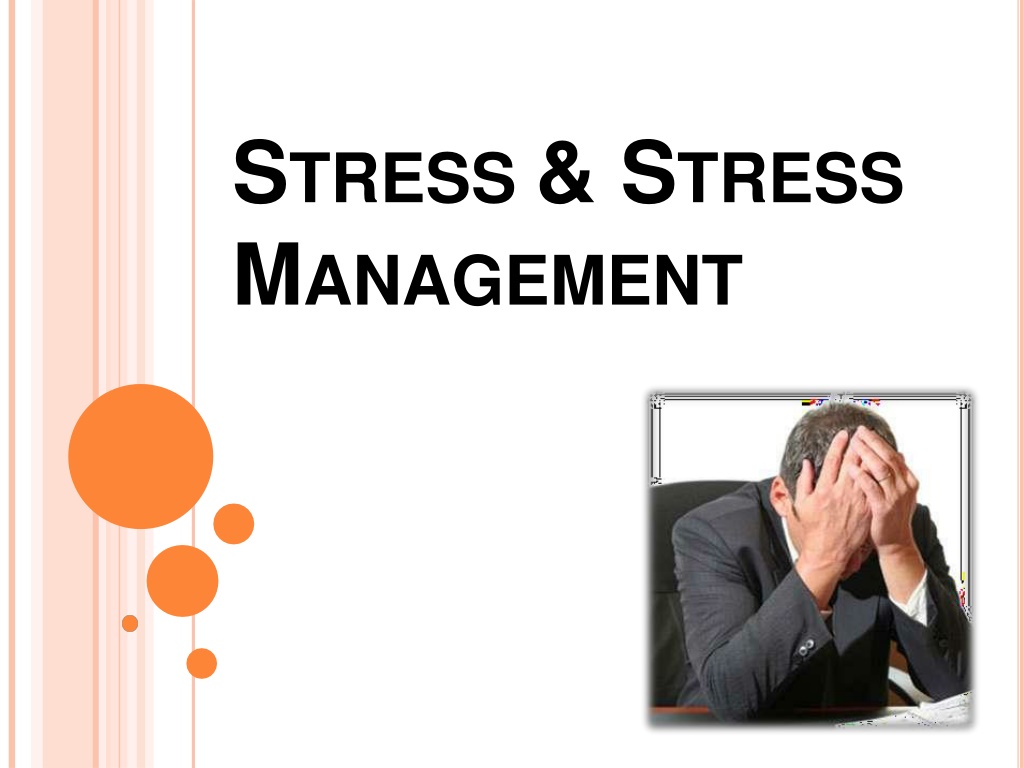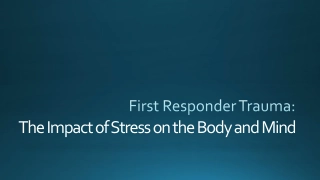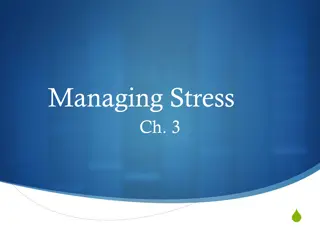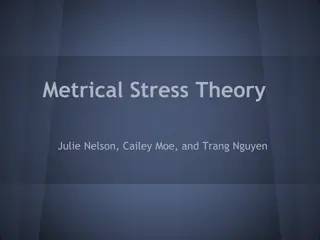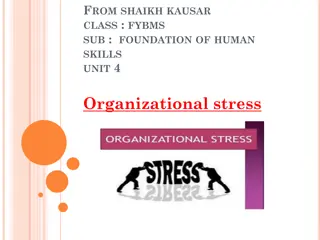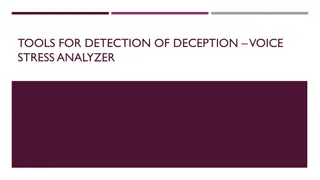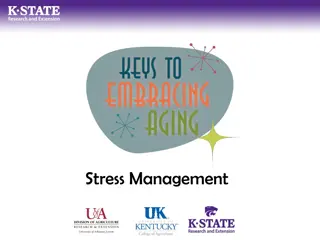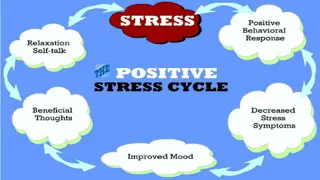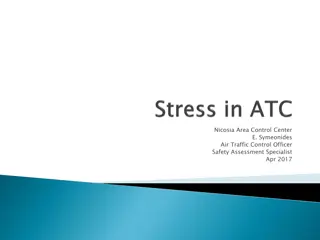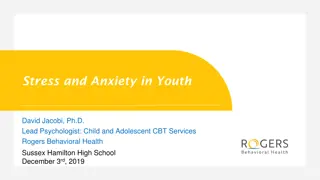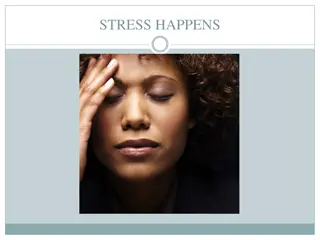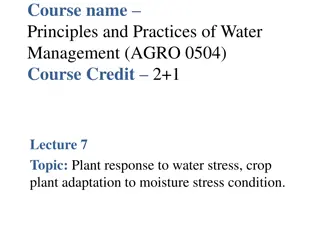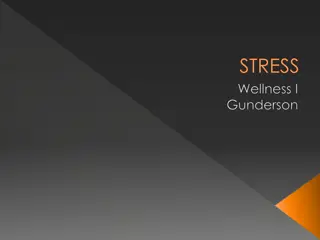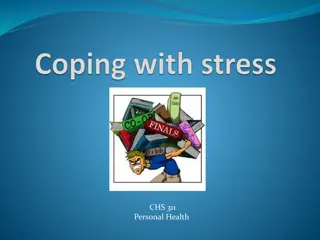Understanding Stress: Types, Management, and Sources
Stress is a complex phenomenon affecting individuals differently. It is crucial to comprehend stress, its sources, and how to manage it effectively. Claude Bernard's concept of the internal environment sheds light on the negative aspects of stress. Stress can be categorized into eustress (good stress) and distress (stress from bad sources), with three general types of stressors impacting individuals. Recognizing the difference between stress and stressors is essential for maintaining well-being and resilience.
Download Presentation

Please find below an Image/Link to download the presentation.
The content on the website is provided AS IS for your information and personal use only. It may not be sold, licensed, or shared on other websites without obtaining consent from the author. Download presentation by click this link. If you encounter any issues during the download, it is possible that the publisher has removed the file from their server.
E N D
Presentation Transcript
STRESS & STRESS MANAGEMENT
HISTORY A key to the understanding of the negative aspects of stress is the concept of milieu interieur (the internal environment of the body), which was first advanced by physiologist Claude Bernard. the French He described it as external changes in the environment or external forces that change the internal balance must be reacted to and compensated for if the organism is to survive.
STRESS: WHAT IS IT? Although we all talk about stress, it often isn t clear what stress is really about. Many people consider stress to be something that happens to them, as a negative event such as an injury or a job loss. Others think that stress is what happens to our body, mind, and behavior in response to an event (E.g. heart thumping, anxiety, or nail biting).
STRESS & STRESSOR Stress : A person s response to events that are threatening or challenging. Stressor : A stimulus that causesstress
STRESS & STRESSOR Its not stress that kills us, it is our reaction to it. Hans Selye
EUSTRESS: GOOD STRESS Getting into college. Getting engaged. Winning the lottery.
DISTRESS: STRESS FROM BAD SOURCES Difficult work environment. Threat of personal injury. Diseases.
CATEGORIZING STRESSORS There are three general types of stressors: occur once Strong stressors that Cataclysmic suddenly and typically affect many people at (e.g., natural disasters). events: Personal stressors: Major life events, such as the death of a family member, that have immediate negative consequences that generally fade with time. Background stressors: Everyday annoyances, such as being stuck in traffic, that cause minor irritations and may have long-term ill effects if they continue or are compounded by other stressful events.
THE GENERAL ADAPTATION SYNDROME A theory developed by Selye that suggests that a person s response to a stressor consists of three stages: alarm and mobilization, resistance, and exhaustion. Stage I Alarm & Mobilization: The fight or flight response which causes you to be ready for physical activity.
THE GENERAL ADAPTATION SYNDROME Stage II Resistance: If stress continues, the body adapts to the stressors it is being exposed to. Stage III Exhaustion: Stress continues to exist for a long time.
THE GENERAL ADAPTATION SYNDROME Stressor Meeting and resisting stressor. Coping with stress and resistance to stressor. Negative consequ- -ences of stress (such as illness) occur when coping is inadequate.
COPING WITH STRESS Efforts to control, reduce, or learn to tolerate the threats that lead to stress are known as coping. We habitually use certain coping responses to deal with stress.
STEPS TO MANAGING STRESS Step 1: Identify if you are stressed.
STEPS TO MANAGING STRESS Step 2: Identify the stressor.
STEPS TO MANAGING STRESS Step 3: Identify the reason for the stressor.
STEPS TO MANAGING STRESS Step 4: Select an appropriate stress management strategy and apply it.
STEPS TO MANAGING STRESS Step 5: Evaluate.
